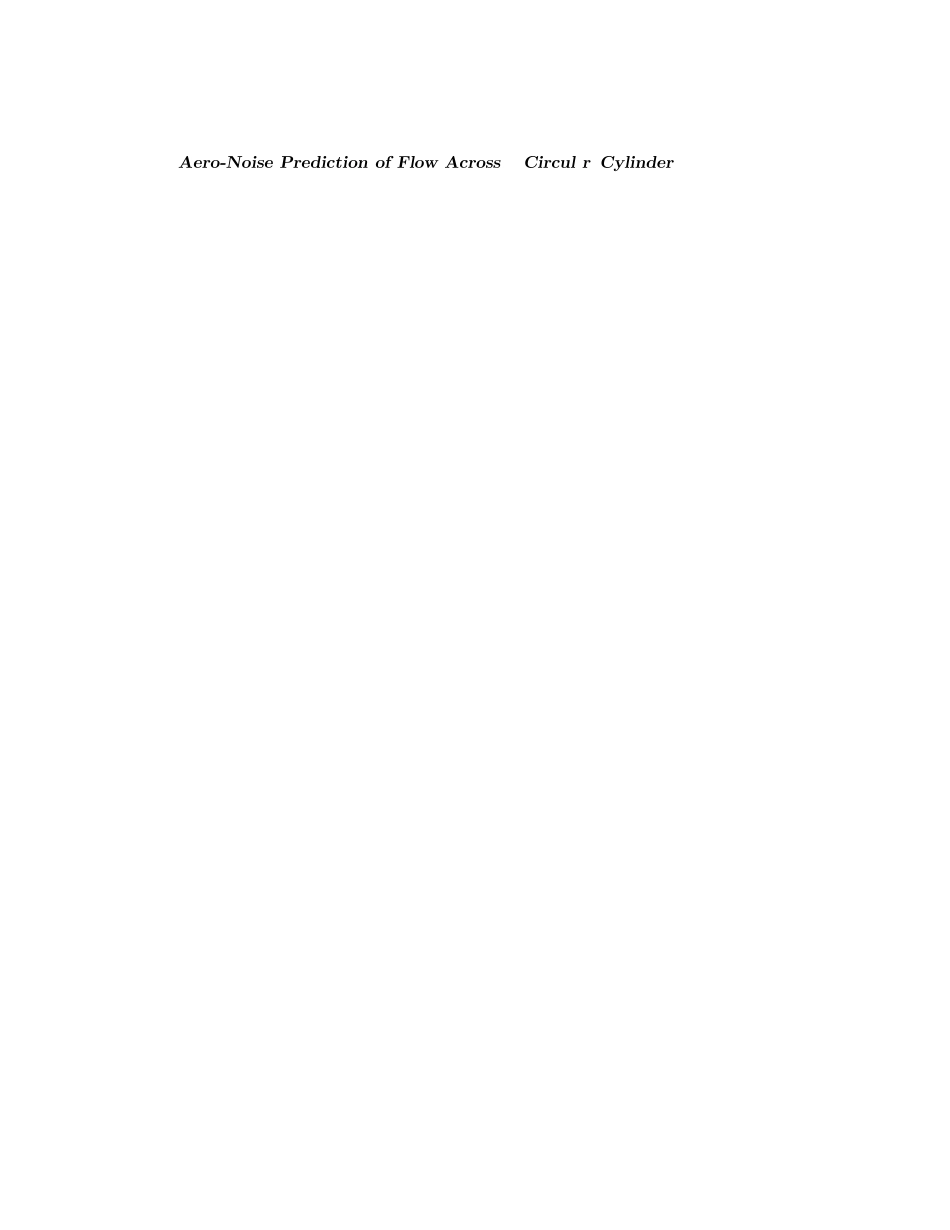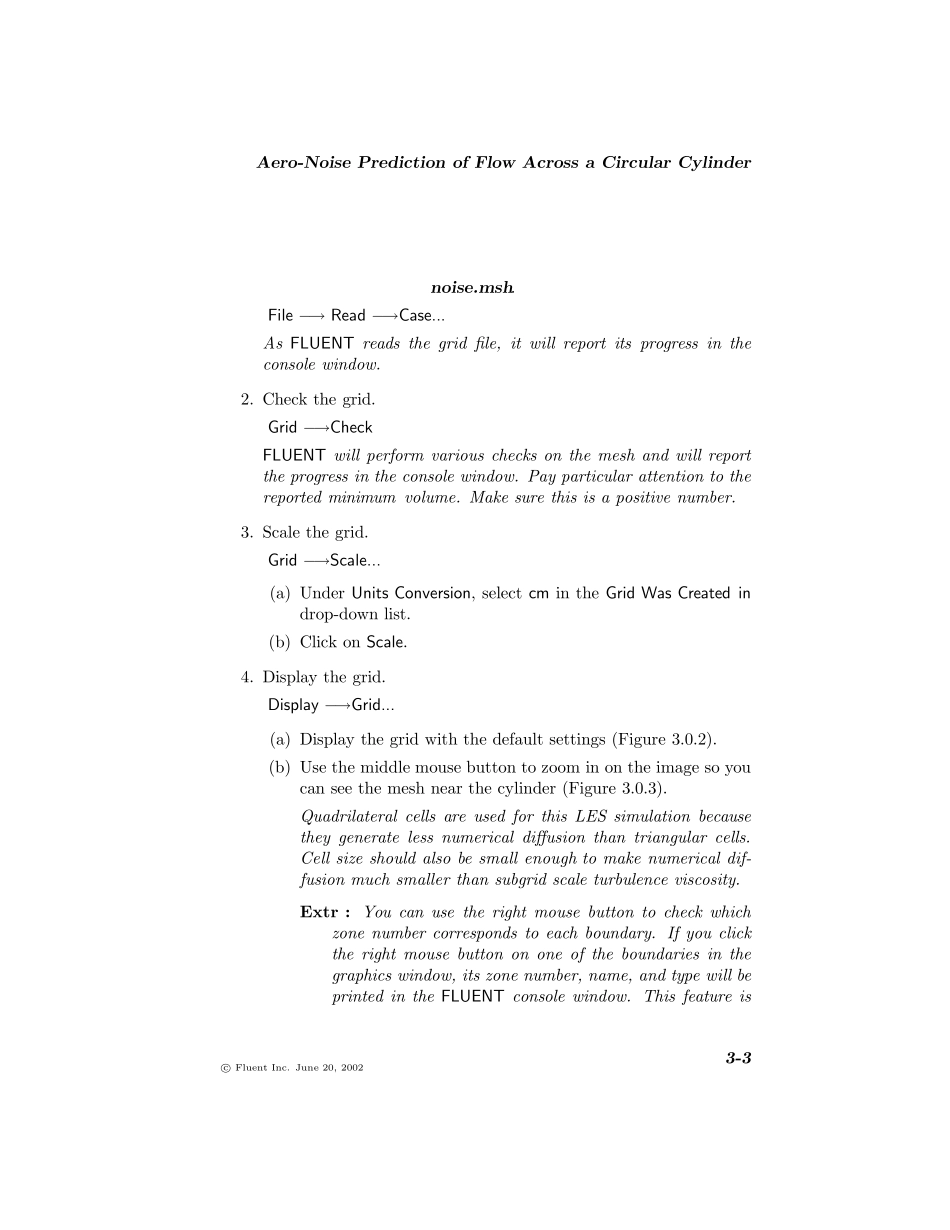Introdu ction: This tutorial demonstrates how to model the 2D turbu-lent flow across a circular cylinder using LES (Large Eddy Simula-tion), and compute flow-induced noise (aero-noise) using FLUENT’sacoustics model.In this tutorial you will learn how to:• Perform 2D Large Eddy Simulation (LES)• Set parameters for an aero-noise calculation• Save surface pressure data for an aero-noise calculation• Calculate aero-noise quantities• Postprocess an aero-noise solutionPrerequ isites: This tutorial assumes that you are familiar with themenu structure in FLUENT, and that you have solved or read Tu-torial 1. Some steps in the setup and solution procedure will notbe shown explicitly.Problem Description: The problem considers turbulent air flow overa 2D circular cylinder at a free stream velocity U of 69.19 m/s.The cylinder diameter D is 1.9 cm. The Reynolds number basedon the flow parameters is about 90000.The computational do-main (Figure 3.0.1) extends 5 D upstream and 20 D downstreamof the cylinder, and 5 D on both sides of it. If the computationaldomain is not taken wide enough on the downstream side, so thatno reversed flow occurs, the accuracy of the aero-noise predictionmay be aff ected. The rule of thumb is to take at least 20 D on thedownstream side of the obstacle.c Flu ent Inc. Ju ne 20, 20023 -1Aero-Noise Prediction of Flow Across a Circular CylinderAero-Noise Prediction of Flow Across a Circular Cylindernoise.msh.File −→ Read −→ Case...As FLUENT reads the grid file, it will report its progress in theconsole window.2. Check the grid.Grid −→ CheckFLUENT will perform various checks on the mesh and will reportthe progress in the console window. Pay particular attention to thereported minimum ...


